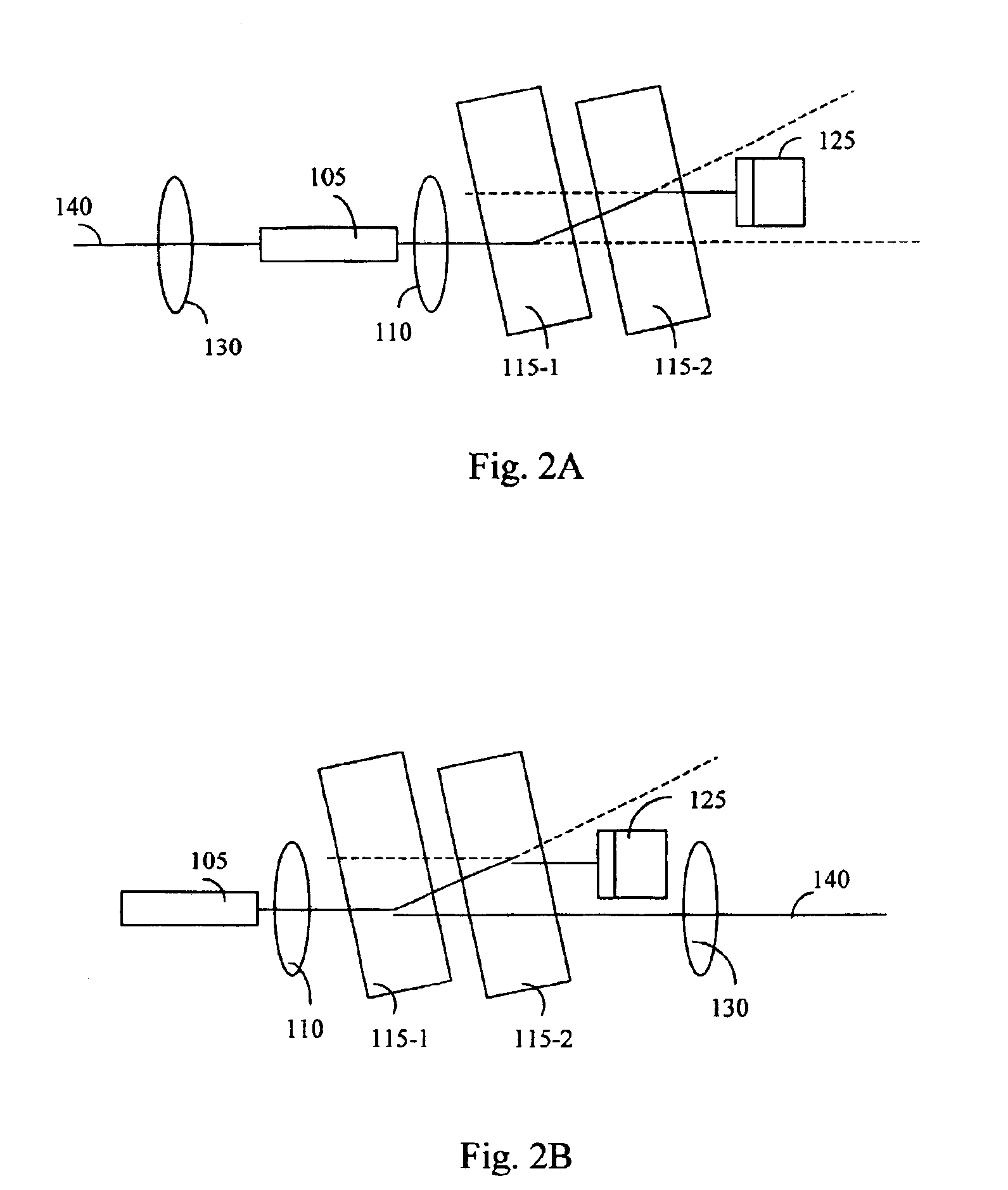Miniaturized external cavity laser (ECL) implemented with acoustic optical tunable filter
a technology of acoustic optical tunable filter and external cavity laser, which is applied in the direction of semiconductor lasers, optics, instruments, etc., can solve the problems of limiting the application of ecl based tunable lasers to optical-fiber telecommunication systems, poor long-term stability/reliability, and many technical challenges
- Summary
- Abstract
- Description
- Claims
- Application Information
AI Technical Summary
Benefits of technology
Problems solved by technology
Method used
Image
Examples
Embodiment Construction
[0017]FIG. 1 shows a functional block diagram for a tunable laser 100 based on External Cavity Laser (ECL) technology. The tunable laser is acousto-optically tuned with wide tuning range. The laser can be continuously tuned or discretely tuned at 25 Ghz and 50 Ghz spacing on the standard ITU grid when integrated with a wavelength locker. The tunable laser as it is configured now can cover easily 100 channels (40 nm) and is provided to move down to 12.5 Ghz spacing in the future. The tunable laser includes a laser diode chip 105 to function as a light source. The laser diode chip 105 is a Fabri-Perot chip laser with broadband, IR emission spectrum. It is the gain cell of ECL laser resonator that is commonly applied in ECL configuration for emitting laser beam to pass through a first collimating lens 110 to project the laser beam onto a main frequency-tuning device 120. The frequency-tuning device 120 is configured as an acousto-optical cell that includes two crystals 115-1 and 115-2....
PUM
 Login to View More
Login to View More Abstract
Description
Claims
Application Information
 Login to View More
Login to View More - R&D
- Intellectual Property
- Life Sciences
- Materials
- Tech Scout
- Unparalleled Data Quality
- Higher Quality Content
- 60% Fewer Hallucinations
Browse by: Latest US Patents, China's latest patents, Technical Efficacy Thesaurus, Application Domain, Technology Topic, Popular Technical Reports.
© 2025 PatSnap. All rights reserved.Legal|Privacy policy|Modern Slavery Act Transparency Statement|Sitemap|About US| Contact US: help@patsnap.com



